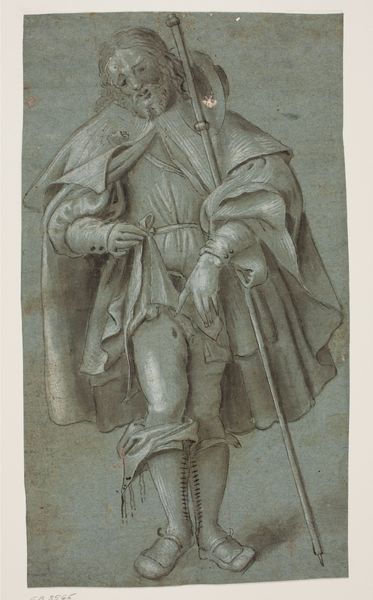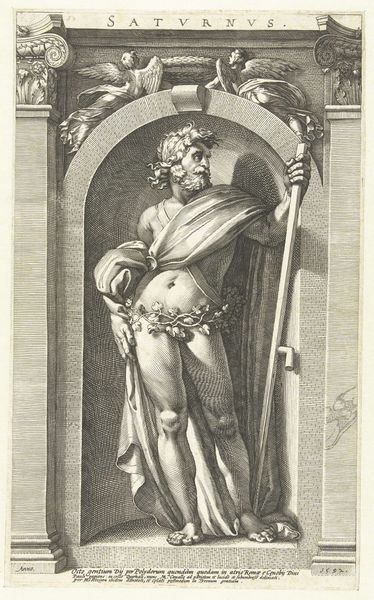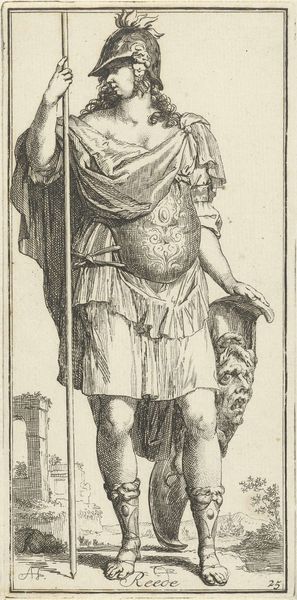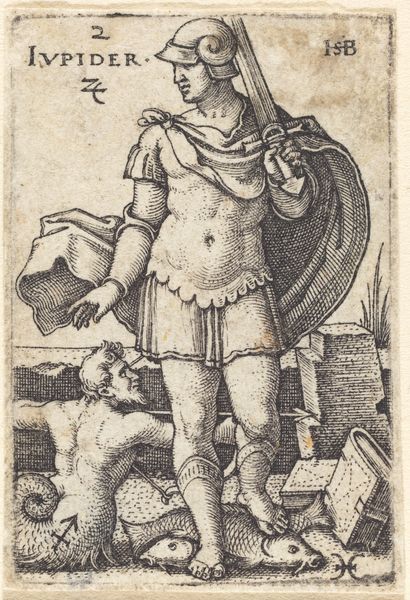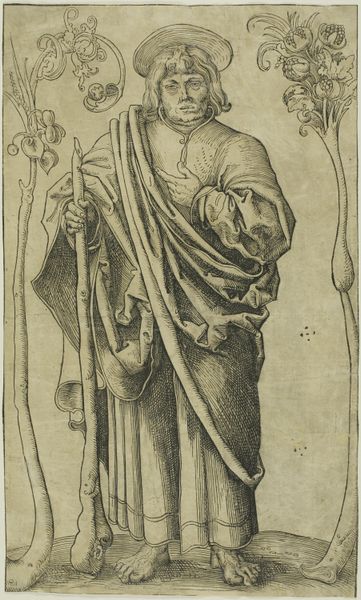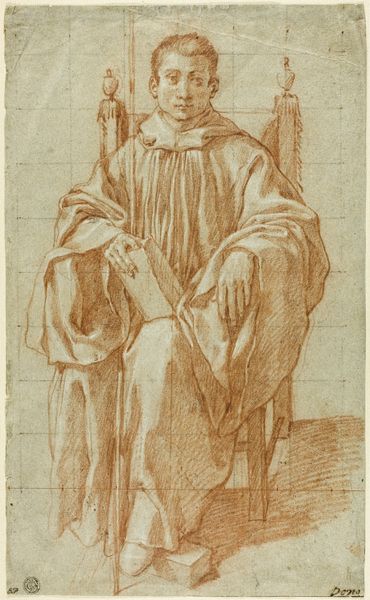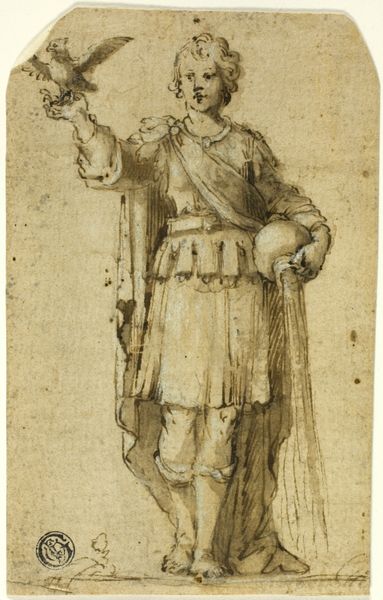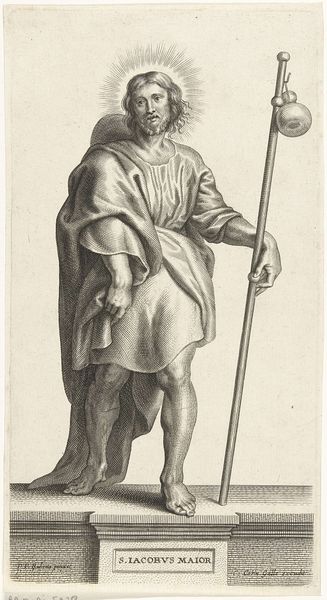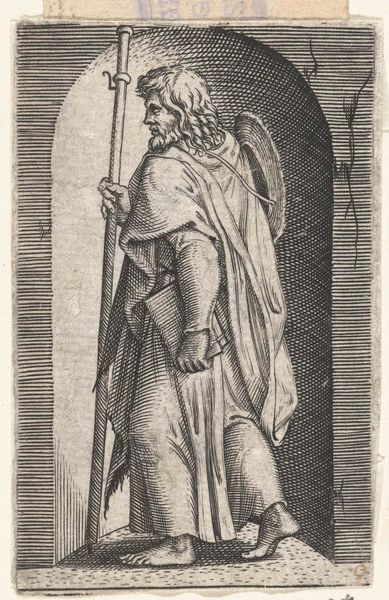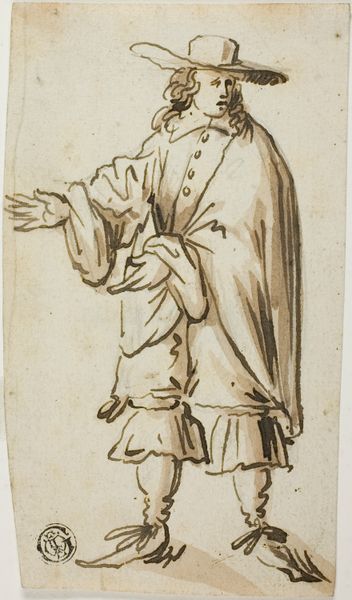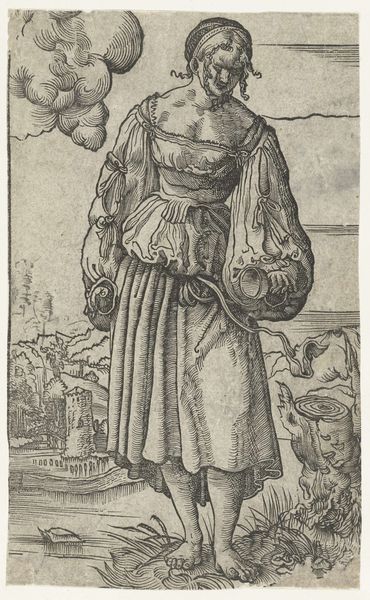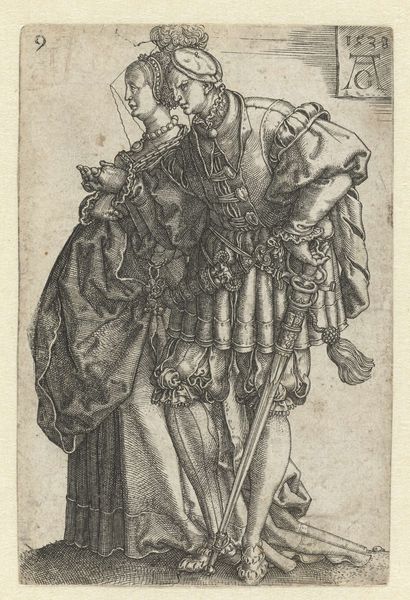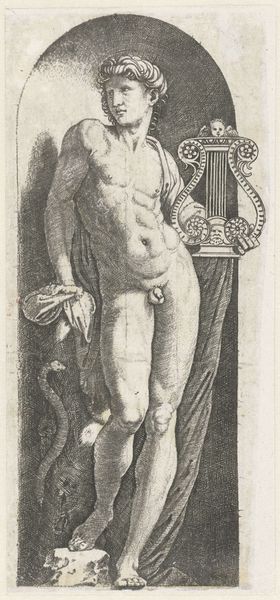
tempera, painting
#
portrait
#
tempera
#
painting
#
figuration
#
underpainting
#
history-painting
#
italian-renaissance
#
early-renaissance
Dimensions: overall: 70.2 x 34.3 cm (27 5/8 x 13 1/2 in.) framed: 86.4 x 51.4 x 7 cm (34 x 20 1/4 x 2 3/4 in.)
Copyright: National Gallery of Art: CC0 1.0
Editor: Here we have Andrea Mantegna's "The Infant Savior," created around 1460 using tempera paint. What strikes me is the way his small body seems so heavy and present. How would you interpret this piece? Curator: Consider the tempera itself. Ground pigments laboriously mixed with egg yolk. It dries quickly, demanding precision and precluding easy revisions. Mantegna’s choice of tempera over oil – which was gaining popularity – speaks to a commitment to traditional workshop practices and ideals, even as he embraces Renaissance humanism. This tension underscores the complex social dynamics of artistic production at the time, between workshop production and individual artistic genius. Editor: So the material choice pushes against what the painting is trying to convey? Curator: Not necessarily "against," but alongside. Think of the gold leaf outlining the halo: A luxurious, imported material, literally flattened by labor, signifying divine status. Consider too the underpainting, visible in areas. These material choices highlight a tension inherent in religious art of this period. It requires expensive materials, made valuable through labour to express devotion but those are the processes and physical substances. How do the child's robes relate to this reading? Editor: They do seem…mundane? For a saviour. The simple garment almost clashes with the precious metal in his halo. Curator: Exactly! And notice how that contrasts with how garments would typically be handled in the depiction of nobility. It focuses attention on the very means of production—challenging those assumed artistic boundaries we expect. It makes us aware of Mantegna’s conscious decisions and the social forces at play in image creation. Editor: It’s fascinating to consider art as a product of not just vision, but material choices reflecting societal pressures and traditional means of production. I'll definitely look at materials differently moving forward. Curator: Precisely. The material reveals layers beyond the immediate subject, providing crucial insights into historical contexts and artist intent.
Comments
No comments
Be the first to comment and join the conversation on the ultimate creative platform.
